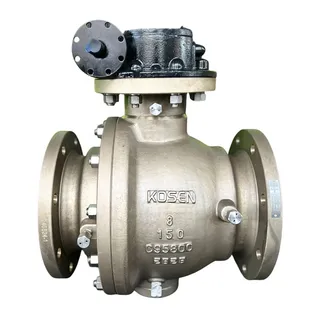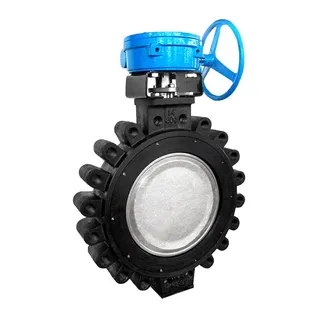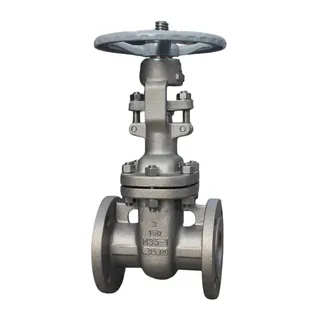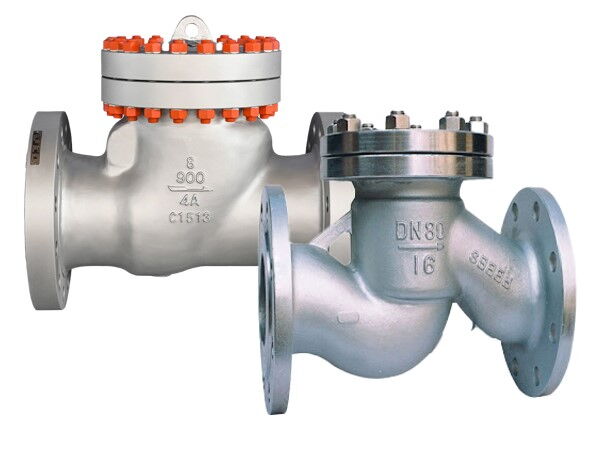
Swing check valves and lift check valves are both designed to prevent backflow in pipeline systems, thereby protecting equipment such as pumps and pipelines. While both valves serve similar purposes, they differ significantly in their structure, operation, and suitable applications. Swing check valves feature a simple design, operate with low flow resistance, and are ideal for large-diameter pipelines with minimal flow rate variations. On the other hand, lift check valves offer stronger sealing performance and are best suited for high-pressure, low-flow systems requiring precise flow control. This article provides a comprehensive comparison of the two valve types, focusing on their working principles, structural features, and application areas, to help users select the most appropriate valve for their specific needs.
Swing check valves and lift check valves are two common types of automatic valves designed to prevent the backflow of media. Their primary function is to prevent reverse flow in pipeline systems, thereby protecting pumps, pipelines, and equipment from damage. Although both types of check valves serve similar purposes, they differ significantly in terms of structure, working principles, and application scenarios. This article will provide a detailed introduction to the working principles, structural features, application areas, and key differences between swing check valves and lift check valves, helping users choose the appropriate type of check valve based on specific needs.
Swing check valves (also known as non-return valves) rely on fluid pressure to automatically open and close, preventing backflow. They feature a simple structure and are suitable for large-diameter pipelines with low flow rates. However, they are not suitable for pulsating flows or media containing solid particles. Swing check valves can reduce pressure drops and perform well under low-flow conditions. Below, we will discuss their working principles, structural features, and application scenarios.
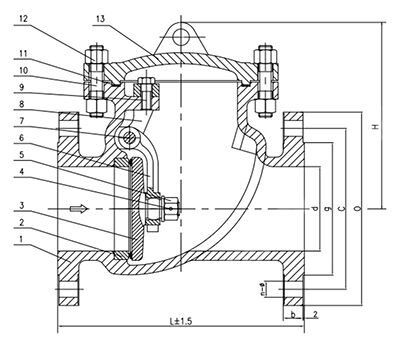
Swing check valves (also called non-return valves) automatically open or close the valve disc based on the pressure of the pipeline media, preventing backflow. When fluid flows in the designed direction, the inlet pressure is higher than the outlet pressure, pushing the valve disc away from the seat and opening the valve. As the flow rate decreases or the flow direction reverses, the valve disc automatically closes to prevent backflow. The valve disc is connected to a rocker arm via a pin shaft, allowing it to rotate around the pin shaft to achieve opening and closing actions.
Simple Design: The valve disc and rocker arm are connected by a pin shaft, allowing the disc to rotate freely around the pin shaft. This simple structure makes maintenance easy.
Low Flow Resistance: The streamlined flow path inside the valve body effectively reduces fluid resistance and pressure drops, making it suitable for large-diameter pipelines with minimal flow rate variations.
Sealing Performance: When the fluid flows in the correct direction, the valve disc is pushed open. When backflow occurs, the disc quickly returns to its seat, ensuring a tight seal to prevent reverse flow.
Applicable Media: Suitable for clean fluid media, but not recommended for high-viscosity fluids or those containing solid particles.
Based on the structure and size of the valve disc, swing check valves can be classified into:
Single-disc Type: Features a single valve disc, with a simple structure suitable for small-diameter pipelines.
Double-disc Type: Consists of two valve discs, suitable for medium-diameter pipelines, offering improved sealing and impact resistance.
Multi-disc Type: Features multiple valve discs, suitable for large-diameter pipelines, providing stronger impact resistance and higher flow control capabilities.
Swing check valves are widely used in industries such as petroleum, chemical, power, natural gas, and water treatment. They are suitable for preventing backflow in clean fluids, especially in scenarios with low flow rates and large pipelines. They are commonly used in pump stations, fire protection systems, and equipment protection.
Lift check valves use fluid pressure differentials to automatically open or close the valve disc, offering strong sealing and pressure resistance. They are suitable for high-pressure, low-flow pipelines. Although they have higher flow resistance, their excellent sealing performance makes them ideal for applications requiring strict flow and pressure control. Below, we will detail their working principles, structure, and applications to help understand their advantages and suitable scenarios.
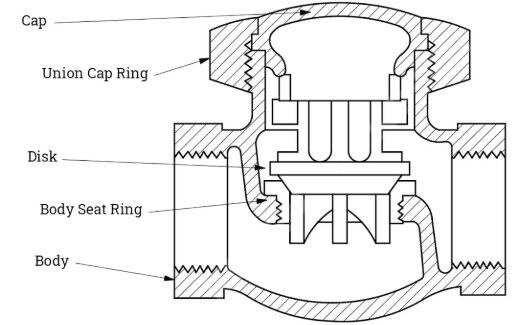
Lift check valves are a type of one-way valve that uses the pressure differential of the pipeline media to automatically open or close the valve disc. When fluid flows in the correct direction, the thrust of the media pushes the valve disc upward, opening the valve and allowing the media to pass through. When backflow occurs, the pressure above the disc exceeds that below, pressing the disc tightly against the seat and preventing reverse flow.
Guide Rod Design: The valve disc of a lift check valve is typically equipped with a guide rod, allowing it to move freely within the guide hole of the valve body, ensuring smooth operation.
Valve Disc and Seat: The valve disc is usually made of metal and may feature a full-metal structure or a combination with rubber gaskets to ensure excellent sealing performance.
High Sealing Performance: During fluid flow, the pressure differential pushes the valve disc upward. During backflow, the disc tightly closes, providing strong sealing performance suitable for high-sealing applications.
High Flow Resistance: The fluid passage in lift check valves is relatively narrow, resulting in higher flow resistance. This makes them suitable for pipelines with low flow rates and precise control requirements.
Lift check valves are suitable for pipelines requiring high sealing performance and low flow rates. They are widely used in high-pressure, low-flow pipeline systems, such as boiler feedwater systems, compressors, and cooling water systems. They are commonly used in demanding industrial pipelines, including chemical, oil and gas, and thermal systems.
Although both swing check valves and lift check valves prevent media backflow, they differ in structure, working principles, and application conditions. Swing check valves are suitable for pipelines with low flow rates and low fluid resistance, while lift check valves are better suited for high-pressure environments with superior sealing performance.
Swing Check Valve: Can be installed in horizontal or vertical pipelines, offering flexible installation options.
Lift Check Valve: Can only be installed in horizontal pipelines, with stricter installation requirements.
Swing Check Valve: The valve disc is connected to a rocker arm via a pin shaft, allowing the disc to rotate freely. When fluid flows in the designed direction, the disc is pushed away from the seat, allowing fluid to pass. During backflow, the disc tightly closes to prevent reverse flow.
Lift Check Valve: The valve disc moves up and down via a guide rod. Fluid flow pushes the disc upward, while backflow presses the disc tightly against the seat to prevent reverse flow.
Swing Check Valve: Lower flow resistance, suitable for large-diameter pipelines with minimal flow rate variations. Good sealing performance, but inferior to lift check valves under low pressure differentials.
Lift Check Valve: Higher flow resistance, suitable for pipelines with low flow rates and high sealing requirements. Strong sealing performance, providing better sealing under high pressure differentials.
Swing Check Valve: Suitable for clean liquid and gas media, but not recommended for high-viscosity fluids or those containing solid particles.
Lift Check Valve: Suitable for applications requiring strict sealing, often used in high-pressure or complex media pipeline systems.
Swing check valves and lift check valves each have unique advantages and application scenarios. Swing check valves feature a simple structure, low flow resistance, and are suitable for large-diameter pipelines with minimal flow rate variations, offering flexible installation options. Lift check valves, on the other hand, provide strong sealing performance and precise flow control, making them suitable for high-pressure, low-flow pipeline systems. Choosing the appropriate type of check valve requires careful consideration of the actual operating environment, media characteristics, flow requirements, and installation conditions.

